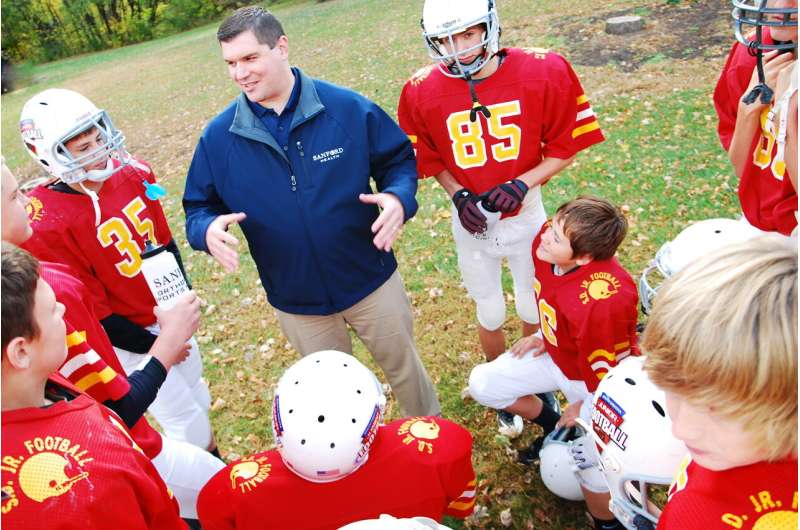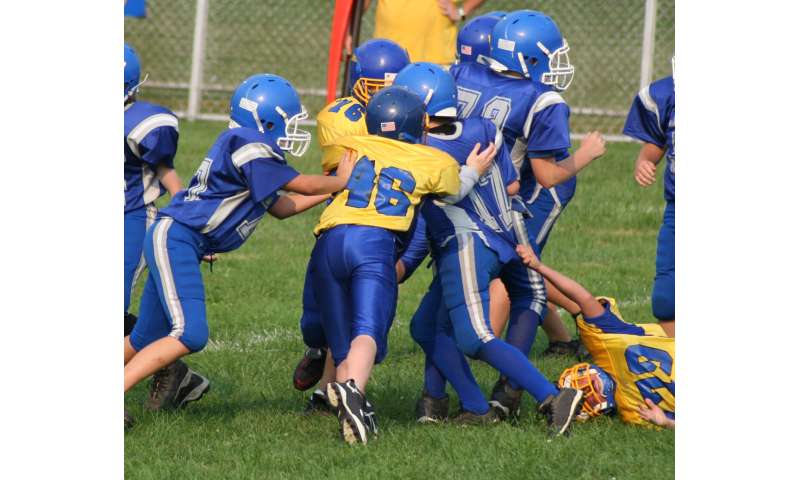
Neuroscience researchers at Sanford Research in Sioux Falls, South Dakota, U.S., Simon Fraser University (SFU), and HealthTech Connex Inc. located at the Health and Technology District in Surrey, British Columbia, Canada, have published the latest results of their ongoing multi-year football study examining subconcussive changes in cognitive brain function in male youth football players.
The findings were recently published in the peer-reviewed journal Brain Communications.
The research team monitored the brain vital signs of 15 male youth football players (age 14 or under) in Sioux Falls, South Dakota, during pre- and post-season play who did not sustain a concussion diagnosis during the season.
“Brain vital signs” translates complex brain waves measured using portable electroencephalography (EEG) into simple, fast, user-friendly and intuitive results that provide an objective evaluation of cognitive brain function. Called the ABCs of brain function, brain vital signs track three well-established neural responses for Auditory sensation (using a response called the N100), Basic attention (using a response called the P300), and Cognitive processing (using a response called the N400).
The study examined this group of male youth football players and reported cognitive processing sensitivity (N400) to subconcussive impairments in those players who did not sustain a concussion diagnosis over the course of the season. In addition, changes in brain vital signs were highly related to the number of head impacts that the players were exposed to during the season.
This youth football study replicated and built on previous Junior-A and Bantam youth ice hockey concussion and subconcussion study results published in Brain: A Journal of Neurology and Brain Communications which resulted in the same findings, confirming significant brain vitals sign changes and concussive/subconcussive impairments in youth contact sport that went undetected using current clinical concussion protocols.
A subconcussive impact is a mechanical force transmitted to the brain below the threshold for a diagnosis of an acute concussive injury. The effects of these low-magnitude impacts may not even be noticeable to the player or to observers on the sideline.
“By monitoring brain vital signs, extracted from complex brain waves measured using portable electroencephalography (EEG), it was possible for us to track three well-established neural responses for auditory sensation, basic attention, and cognitive processing in these youth football players,” says Dr. Thayne Munce, the study’s principal investigator and Assistant Scientist in the Environmental Influences on Health and Disease Group at Sanford Research. “The results of the study show that repetitive subconcussive impacts triggered compounding effects in brain function changes over time. While more research needs to be done in this area, this is the first step in how we can look at youth contact sports in the future.”
The results of this youth football study showed:
- Significant brain vital sign changes in pre-to-post season cognitive processing speed.
- A significant relationship between the subconcussive brain vital sign changes and head impact exposures as measured by the total number of head impacts as well as number of games and/or practices over the season.
- The authors noted that the brain vital sign changes and total number of head impacts for the football players closely related with the results from older, Junior-A, ice hockey players from a previous study.

Canadian collaborators include neuroscientist Dr. Shaun Fickling, lead R&D scientist at HealthTech Connex Inc., SFU Ph.D. graduate and lead author of the study, as well as Dr. Ryan D’Arcy, an SFU professor and co-founder of HealthTech Connex Inc. and the Health and Technology District in Surrey B.C. HealthTech Connex Inc. is a health technology company developing the NeuroCatch Platform.
“These findings provide further support that there is a predictive relationship between head impact exposure in contact sport and subtle changes in cognitive brain function” reports Dr. Shaun Fickling, who was the study’s lead author as part of his Ph.D. in Biomedical Engineering at Simon Fraser University.
“The results are really quite positive and optimistic for the future of brain injury prevention and management in sport,” further explains Dr. Thayne Munce. “Now that we can sensitively detect changes associated with subconcussive impacts, it is possible to identify the leading ways to prevent, treat, and manage possible impairments, which is a critical step that is now getting underway.”
Source: Read Full Article





